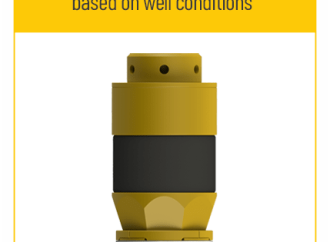Planning for retirement requires careful strategies, especially for high earners who may face unique challenges related to taxes, asset management, and estate planning. High earners need a tailored approach to maximize retirement savings while efficiently managing potential tax implications. This article will cover effective retirement strategies for high earners, focusing on optimizing investments, managing taxes,
Planning for retirement requires careful strategies, especially for high earners who may face unique challenges related to taxes, asset management, and estate planning. High earners need a tailored approach to maximize retirement savings while efficiently managing potential tax implications. This article will cover effective retirement strategies for high earners, focusing on optimizing investments, managing taxes, and securing a financially comfortable retirement.
1. Understanding the Importance of Retirement Planning for High Earners
High earners often have distinct financial landscapes that require special consideration in retirement planning. Unlike average earners, high earners face higher tax brackets, complex income streams, and potentially extensive estates to manage. Proper retirement planning can provide high earners with financial security, enabling them to maintain their lifestyle post-retirement and even create generational wealth. Strategies focused on tax efficiency, diversification, and estate planning are crucial for this group.
2. Maximize Contributions to Tax-Advantaged Accounts
High earners can significantly benefit by maximizing their contributions to tax-advantaged retirement accounts. These accounts include:
- 401(k) and Roth 401(k) Plans: Contributing the maximum allowed in 2024 can lower taxable income. For high earners, the combined benefits of a traditional 401(k) and a Roth 401(k) allow for both immediate tax savings and tax-free withdrawals in retirement.
- Backdoor Roth IRA: Since many high earners exceed the income limits for direct Roth IRA contributions, a backdoor Roth IRA conversion allows them to contribute to a Roth account indirectly, growing tax-free income for retirement.
- Health Savings Account (HSA): An HSA offers triple tax advantages: contributions are tax-deductible, growth is tax-free, and withdrawals for medical expenses are tax-free. High earners should maximize their HSA contributions to build a tax-free fund for healthcare expenses in retirement.
3. Diversify Investment Portfolio with a Mix of Assets
Asset diversification is essential for high earners to manage risk and ensure steady growth. In addition to traditional investments, high earners should consider the following:
- Real Estate Investments: Real estate can offer passive income and potential tax advantages. For high earners, rental properties, Real Estate Investment Trusts (REITs), and property syndications are excellent options to diversify income.
- Alternative Investments: High earners may explore investments in private equity, hedge funds, or commodities. Although these come with risks, they also offer diversification beyond standard market assets.
- Global Investments: Diversifying globally can protect a portfolio against regional economic downturns. International stocks and bonds provide exposure to a wider range of growth opportunities.
4. Strategic Tax Planning for High Earners
Tax efficiency plays a critical role in retirement planning for high earners. Without proper planning, high tax rates can erode wealth quickly. Some strategies include:
- Tax-Loss Harvesting: This involves selling underperforming investments to offset capital gains, reducing tax liability. For high earners, tax-loss harvesting can significantly impact overall tax efficiency.
- Municipal Bonds: Municipal bonds offer tax-exempt income at the federal level, and potentially state and local levels, depending on residency. For high earners, investing in these can provide tax-free income and reduce taxable interest.
- Charitable Donations: High earners can reduce their taxable income through charitable giving, such as setting up a Donor-Advised Fund (DAF) or a Charitable Remainder Trust (CRT). These vehicles allow high earners to support causes while benefiting from tax deductions.
5. Estate Planning to Preserve Wealth for Future Generations

This image is taken from google .com
Estate planning is crucial for high earners who want to protect and transfer wealth to their heirs efficiently. Key components of estate planning include:
- Creating a Trust: Trusts provide greater control over asset distribution, minimize estate taxes, and can protect assets from creditors. High earners often use irrevocable trusts for these benefits.
- Gifting Strategies: The IRS allows an annual exclusion amount that can be gifted tax-free. High earners can gift assets strategically to reduce the taxable estate over time.
- Life Insurance Policies: High-value life insurance policies can cover estate taxes and provide heirs with tax-free income, safeguarding wealth for the next generation.
6. Planning for Healthcare and Long-Term Care Costs
Healthcare and long-term care are major considerations for high earners in retirement. With longer life expectancies, high earners may need substantial funds for medical expenses. Some strategies include:
- Long-Term Care Insurance: Purchasing long-term care insurance at a younger age can lock in lower premiums, ensuring coverage for assisted living, nursing homes, or home healthcare if needed.
- Maximizing Health Savings Accounts (HSAs): HSAs can be used to build a reserve for healthcare expenses in retirement. For high earners, this is a tax-efficient way to prepare for significant future healthcare costs.
7. Implementing a Withdrawal Strategy to Optimize Retirement Income
High earners need a strategic withdrawal plan that balances retirement income needs with tax efficiency. Key withdrawal strategies include:
- Roth Conversions Before Retirement: By converting traditional IRA funds to Roth IRAs gradually over time, high earners can reduce future Required Minimum Distributions (RMDs) and create a source of tax-free income in retirement.
- Utilizing the “Bucket Strategy”: This strategy involves segmenting retirement funds into different “buckets” based on timeframes. For example, cash and bonds for short-term needs, stocks for mid-term, and alternative investments for long-term growth.
- Implementing a Tax-Smart Withdrawal Plan: Coordinating the order of withdrawals from taxable, tax-deferred, and tax-free accounts can help minimize taxes. High earners can consider withdrawing from taxable accounts first to allow tax-deferred accounts to continue growing.
Analysis Table
| Strategy | Purpose | Key Benefits |
|---|---|---|
| Maximize 401(k) and HSA | Tax-advantaged retirement savings | Lowers taxable income, tax-free medical fund |
| Backdoor Roth IRA | Roth IRA access for high earners | Tax-free growth, no income limits |
| Real Estate Investments | Diversified income stream | Passive income, tax benefits |
| Tax-Loss Harvesting | Offsets capital gains | Reduces tax liability |
| Charitable Donations | Supports causes and reduces taxes | Tax deductions, legacy building |
| Creating a Trust | Estate planning and asset protection | Minimizes estate taxes, protects assets |
| Long-Term Care Insurance | Covers long-term healthcare expenses | Reduces healthcare cost burden in retirement |
| Roth Conversions | Reduces future RMDs | Provides tax-free retirement income |
Comparative Table of Key Retirement Accounts
| Account Type | Eligibility | Tax Treatment | Withdrawal Rules |
|---|---|---|---|
| Traditional 401(k) | Employer-sponsored | Tax-deferred, reduces taxable income | Penalty-free after age 59½, RMDs at 73 |
| Roth 401(k) | Employer-sponsored | Contributions post-tax, withdrawals tax-free | No RMDs if rolled into Roth IRA |
| Backdoor Roth IRA | No income limit for conversion | Tax-free growth on after-tax contributions | No RMDs |
| Health Savings Account | High-deductible health plan required | Contributions tax-deductible, tax-free withdrawals for healthcare | No RMDs, can be used for medical expenses |
| Donor-Advised Fund | Charitable contributions | Tax-deductible contributions, tax-free growth | Distributed to charities over time |
Conclusion
For high earners, effective retirement planning goes beyond simply saving—it involves strategic tax planning, diversified investments, and thoughtful estate management. By maximizing contributions to tax-advantaged accounts, diversifying investments across multiple asset classes, and implementing tax-efficient strategies, high earners can build a robust retirement portfolio. Additionally, comprehensive estate planning and long-term care considerations help safeguard wealth for future generations and ensure financial security in retirement.
Each of these strategies supports a financially sustainable and comfortable retirement, enabling high earners to maintain their lifestyle and legacy. With proper planning, high earners can enjoy the rewards of their hard work while securing a prosperous future for themselves and their loved ones. Starting early and regularly reviewing these strategies is key to adapting to economic changes and making the most of available retirement planning opportunities in 2024 and beyond.






















